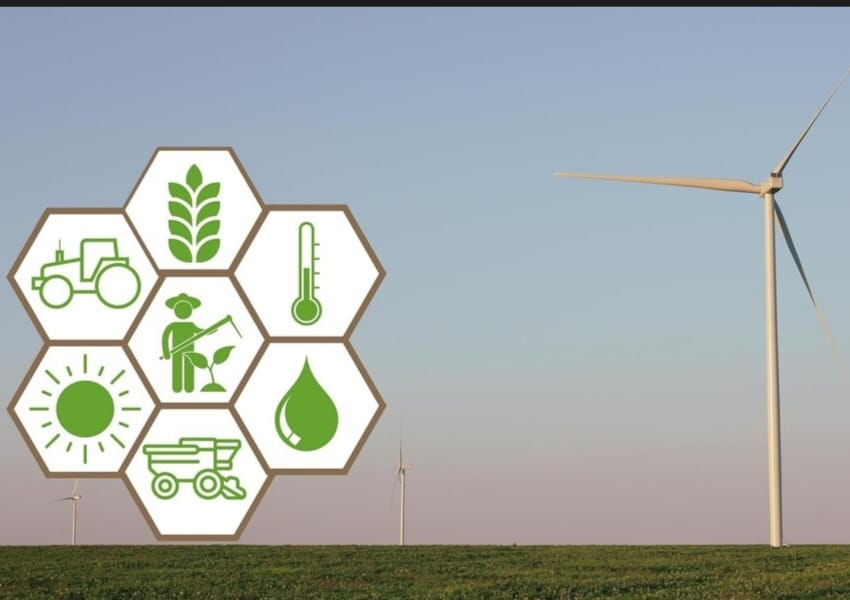Embracing the challenge: Reinventing your decarbonisation strategy

Consumer awareness of decarbonisation as an urgent need is still low in many geographies; and mainstream finance still needs to grapple with these new realities, writes Ashay Gupta, Principal of Xynteo.
As we stand at the forefront of a pivotal moment in our planet’s history, we have an extraordinary opportunity to reshape our global economy. Now is the time for organisations to step up, to craft comprehensive and actionable roadmaps that will turn these aspirations into reality.
The path to a sustainable future lies in our collective ability to innovate, collaborate, and act decisively. By working together to limit global warming to 1.5°C[1], as recommended by the IPCC, we can safeguard our planet for generations to come. The journey ahead is ambitious, with a target to manage our global carbon budget of about 420 GtCO2. This challenge, far from insurmountable, is a catalyst for transformative change. It’s a call to reimagine our industries, our cities, and our way of life. The record-high emissions of 40.8 billion tons of CO2eq[2] in 2021 only underscore the vast potential for improvement and the urgency of our task. Encouragingly, many of the world’s largest economies have already set their sights on net zero targets between 2050 and 2070. This global commitment signals a new era of sustainable growth and shared responsibility.
There are many challenges organisations are facing while trying to advance their efforts in decarbonisation. The first challenge is the difficulty in aligning with stakeholders. Deep decarbonisation is still a relatively new topic for many organisations, especially in emerging markets. Consumer awareness of decarbonisation as an urgent need is still low in many geographies; and mainstream finance still needs to grapple with these new realities. Sometimes, even the board may not be convinced by bold decarbonisation plans, making it difficult for CEOs to further this agenda.
Even if these systemic issues are resolved with strong stakeholder management, there are other challenges that CEOs must address. Dealing with decarbonisation requires a different set of skills—even a renewed perspective on the role of business compared to what the large managerial machinery of an organisation is accustomed to. This also requires a significant investment of time and resources in building awareness and knowledge within the organisation and devising ways to mobilise the initial excitement towards action and results. Organisations must erase the mindset of viewing decarbonisation as a mere compliance or brand enhancement tool and make it a strategic lever for creating long-term value to their shareholders.
Once the organisation is aligned, leaders must tackle another set of challenges: build a strategic plan and take action to reduce emissions. While this looks like any other strategic planning exercise, the uncertainty and complexity of decarbonisation are unique in many ways. Many technologies still need to be fully developed and may seem to be costlier at first look as compared to conventional alternatives. Also, competing solutions often need to be fully proven. While you may have a time-tested playbook for many of your existing business problems, building a decarbonisation strategy may soon become an overwhelming exercise, leading to indecision or sub-optimal outcomes.
Keeping this in mind, we have built a set of seven key actions that an organisation can take to tackle these complex issues:
Build a mission-driven team: There are few precedents of the urgency and the complexity that decarbonisation poses in front of organisations. While your previous transformation efforts may have been driven by changing customer needs, the actions of your competitors, or the need for reducing costs etc., decarbonisation requires companies to act while these drivers are yet to emerge fully. Hence, the team must internalise this fundamental difference between decarbonisation and earlier transformations. Also, decarbonisation is a long journey; while many headwinds and tailwinds affect a business along the way, they shouldn’t significantly jeopardise your decarbonisation plans. Building a committed mission-driven team which understands the uniqueness of decarbonisation and its challenges will be crucial in driving an organisation towards net zero.
Find where your emission lies: An end product or service is often supported by a complex supply chain, which can be spread geographically. While it may be relatively easy to measure direct emissions, supply chain emissions can be tough to measure. However, a majority of total emissions may be part of the supply chain, making it crucial to address. Therefore, estimating which part of the supply chain contributes to the most emissions is imperative. You can do an initial assessment by developing a rough map of your supply chains and evaluating emissions based on widely available emission factors and data from your supply chain partners. You can also develop a deeper and continuous view of your emissions with the help of digital technologies. There are ongoing efforts to build solutions to create transparency within the supply chain, and a good decarbonisation strategy requires building digital capabilities to develop supply chain emission transparency.
Give necessary impetus to supply chain decarbonisation: While the last couple of decades have been about specialising and outsourcing manufacturing, this model could make the decarbonisation journey even more difficult. Strategic supply chain partners must clearly understand your decarbonisation ambitions and commitment and build their decarbonisation plans. Organisations can support supply chain decarbonisation by helping them build awareness on the urgency to decarbonise, decarbonisation technologies, green finance etc. Redefining supplier performance assessment methodologies by introducing decarbonisation performance as a key criterion and audit of their emission reduction practices would further mobilise and provide them with incentives. Innovative models, such as enabling credit risk guarantees for their investments in new decarbonisation technologies, will allow supply chain partners to access finance at an affordable price.
Build an aggressive decarbonisation strategy rather than tracking the market: While traditional wisdom suggests caution, a successful decarbonisation strategy must be aggressive. The remaining carbon budget will deplete by the end of this decade if substantial on-ground actions are not taken. Also, decarbonising your business will require introducing nascent technologies, investing significantly in research and development to build high-quality, low-carbon products, deploying capex to construct new and low-emission manufacturing facilities wherever needed, and sometimes shaping consumer mindset and augmenting consumer behaviour. Achieving significant results by 2030 means moving fast and decisively, especially in growing economies where greenfield, low-emission infrastructure is essential. By aligning with decarbonisation targets now, you avoid future overhauls and downtime. An organisation aligned with significantly reducing the emission of their products and services will gain a competitive advantage over its peers who conduct business within the old paradigm. Hence, we suggest considering new investments as new businesses to come out of the incumbent mindset.
Identify immediate wins and act: Nothing mobilises a team better than action on the ground. Therefore, it is necessary to identify areas where your organisation could achieve a quick win. Many decarbonisation projects are commercially feasible today, if planned and executed well, and many other technologies are on a steep cost reduction curve. Logistics and energy could be a few areas where your organisation could quickly switch to low-emission solutions. There is often a tendency to move slowly and cautiously, even if the risks are not high. Speed of action would allow your organisation to learn how to minimise residual risks and support building the ecosystem you need. Especially if your organisation is a leading one in its sector expecting a premium or largest market share for differentiated products, it is even more critical for you to act quickly, as your actions allow you to retain your market position as a thought leader in customer’s mind, while also unleashing a multiplier effect.
Keep a close eye on market developments: Decarbonisation technologies are evolving quickly; what was not feasible a year ago could be a sound investment now. There are often conflicting views on emerging technologies, and it is usually good to build a comprehensive view by gathering market intelligence constantly. Also, deploying decarbonisation technologies at scale is often dependent on the development of the entire value chain, and a critical development further away in the supply chain has implications for your decarbonisation plan. Staying informed through sustained market intelligence helps you navigate diverse viewpoints and spot opportunities, since your decarbonisation plan is interconnected with your entire value chain. Engaging with decarbonisation coalitions and platforms in your industry could be an efficient way to build capacity, share knowledge, and collaborate across the value chain.
Build strategic partnerships: Many decarbonisation technologies and solutions risk getting stuck in catch-22 situations. Solution developers and their investors need to see signals of sufficient future demand that they can bet on. And users of decarbonisation solutions need reliable solutions at commercially feasible prices to deploy them at scale. Hence, collaborative partnerships are crucial in accelerating decarbonisation and building the supply and demand of decarbonisation solutions in tandem. Leaders should identify which partnerships are vital for their business and take a strategic approach to build those partnerships. This approach can allow you to shape the technology as per your need, get access to them earlier than your competitors, and stay ahead of your peers.
A strong decarbonisation strategy could become the most significant differentiator if organisations can commit themselves to the task ahead and act timely on the seven key action areas mentioned above. Decarbonisation is both a challenge and an opportunity, and your actions would define what it turns out to be for your organisation.
About The Author
The author of article is Ashay Gupta, Principal of Xynteo
Disclaimer: The views expressed in the article above are those of the authors’ and do not necessarily represent or reflect the views of this publishing house. Unless otherwise noted, the author is writing in his/her personal capacity. They are not intended and should not be thought to represent official ideas, attitudes, or policies of any agency or institution.




































































































































































































































































































































































































































































































































































































































































































































































































































































































































































































































































































































































































